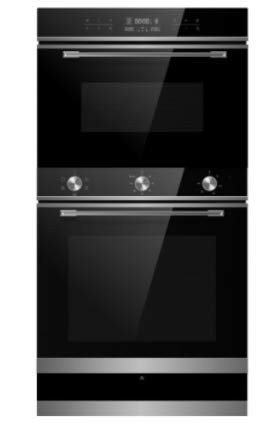Understanding Ovens and Hobs: A Comprehensive Guide
Cooking has actually come a long way given that the days of open flames and simple cooking techniques. Today, ovens and hobs are at the heart of contemporary kitchen areas, supplying versatility, effectiveness, and an array of cooking alternatives. Whether you are an amateur cook or a seasoned chef, comprehending the differences, features, and functions of these devices is important for optimizing cooking capacity. This short article breaks down the different types of ovens and hobs available on the market, their performances, and how to select the ideal home appliances for your kitchen.
What is an Oven?
An oven is an enclosed area designed for heating and cooking food, using various approaches such as baking, roasting, and broiling. Ovens come in different types, each serving special cooking preferences and requirements.
Types of Ovens
Conventional Ovens:
- Use gas or electricity for heating.
- Usually consist of a heating aspect at the top and bottom.
- Suitable for basic baking jobs.
Convection Ovens:
- Use a fan to flow hot air, promoting even cooking.
- Appropriate for baking, roasting, and reheating.
- Decreases cooking time and improves flavor.
Steam Ovens:
- Utilize steam to cook food while retaining wetness and nutrients.
- Outstanding for health-conscious cooking, such as vegetables and fish.
Microwave Ovens:
- Use electromagnetic radiation to heat food quickly.
- Best for reheating leftovers or cooking simple meals.
Wall Ovens:
- Built into the wall, conserving area in the kitchen.
- Readily available in various configurations, consisting of single or double ovens.
Key Features of Ovens
- Temperature Control: Precision heating for different baking and cooking procedures.
- Self-Cleaning Options: Some models have self-cleaning modes that utilize heats to burn food residue.
- Smart Features: Wi-Fi connection enables remote pre-heating, tracking, and dish management by means of mobile phones.
What is a Hob?
A hob is a cooking surface, typically described as a stove or cooktop, where pots and pans is placed for heating. Hobs are readily available in different products, sizes, and heating techniques, accommodating diverse cooking needs.
Types of Hobs
Gas Hobs:
- Utilize gas burners for direct flame cooking.
- Deal precise temperature level control and are preferred by many professional chefs.
Electric Hobs:
- Use electric coils or smooth tops.
- Some designs are geared up with induction innovation, supplying fast heating through electromagnetic energy.
Induction Hobs:
- Cookware must be made from magnetic products.
- Very energy-efficient, supplying fast heat and lowering burn dangers.
Ceramic Hobs:
- Feature a glass-ceramic surface with heating components below.
- Easy to clean but can be less energy-efficient than induction hobs.
Secret Features of Hobs
- Burner Configuration: Varies from two to 6 burners, depending on model and size.
- Power Levels: Multiple settings enable for greater precision in cooking.
- Safety Features: Options like flame failure devices and child lock settings ensure security during cooking.
Choosing the Right Oven and Hob
Selecting the best oven and hob for your kitchen involves careful factor to consider of numerous factors. Below is a list of concerns to direct your choice process:
- What is your main cooking style?
- Just how much kitchen space do you have?
- What is your budget?
- Do you prefer gas or electric appliances?
- Are additional features like wise connection essential to you?
Table Summary of Key Differences Between Ovens and Hobs
| Function | Oven | Hob |
|---|---|---|
| Functions | Baking, roasting, broiling | Boiling, frying, sautéing |
| Cooking Method | Enclosed heat | Direct cooking surface |
| Temperature level Control | Adjustable settings | Range settings |
| Types | Electric, gas, convection, microwave | Gas, electric, induction, ceramic |
| Cooking Capacity | Larger (can cook multiple meals) | Smaller (concentrate on instant cooking) |
| Cleaning | Self-cleaning choices available | Usually manual cleaning required |
Maintenance Tips for Ovens and Hobs
Appropriate care and maintenance of your cooking devices extend their life expectancy and efficiency. Here are essential maintenance suggestions:
Regular Cleaning:
- Clean the oven interior after each usage to prevent residue buildup.
- Wipe down hob surfaces after cooking to avoid discolorations.
Check Seals:
- Ensure the oven door seals are intact to keep energy efficiency.
- Replace damaged gaskets and seals as required.
Check Burners and Elements:
- For gas hobs, check for obstructions in burners.
- For electric hobs, check coils and surfaces for indications of wear.
Frequently asked questions
Can I utilize any cookware on induction hobs?
- No, induction hobs just deal with magnetic cookware, such as cast iron or stainless-steel.
What is the most energy-efficient cooking device?
- Induction hobs are usually the most energy-efficient choice, using less energy than traditional gas or electric designs.
How frequently should I clean my oven?
- It's a good idea to clean your oven every few months, or more frequently if you use it often.
Can I set up an oven and hob independently?
- Yes, both home appliances can be set up individually based on kitchen style and area.
What should I think about when installing a gas hob?
- Guarantee appropriate ventilation and follow regional security codes. Integrated Ovens And Hobs is suggested to have a professional set up gas devices.
Understanding the functions, types, and maintenance of ovens and hobs can considerably boost your cooking experiences. Picking the right devices tailored to your cooking design, kitchen area, and security needs can make all the difference in achieving culinary success. By being informed about your options, you can enjoy a more effective and enjoyable cooking journey, bringing delicious meals to your table with ease.

